Christie's. Important Chinese Ceramics and Works of Art, New York, 18 march 2021
A magnificent and very rare large lacquered and gilt wood seated figure of Manjushri, Kangxi period (1662-1722)
Lot 820. A magnificent and very rare large lacquered and gilt wood seated figure of Manjushri, Kangxi period (1662-1722). The figure: 27 ½ in. (70 cm.) high; overall height: 37 in. (94.1 cm.) high. Estimate USD 300,000 - USD 500,000. Price realised USD 1,350,000. © Christie's 2021
The bodhisattva sits in dhyanasana on a double-lotus base, holding aloft a sword of wisdom in his raised right hand and a lotus stem in his left. He is clad in a voluminous dhoti and adorned with sashes and jewelry. The face is serene in expression and the hair is pulled into a high chignon secured by a five-petaled crown and a small vajra.
The M. C. Hammonds Foundation Inc., Switzerland, 1995.
The present figure in the home of M. C. Hammonds. Photographer unknown.
Note: Manjushri, the embodiment of the Perfection of Wisdom (Sanskrit: Prajnaparamita), is shown here in his two-armed emanation, wielding a sword (khadga) and gracefully grasping the stem of a blue lotus (nilotpala) which rises and blooms at his left shoulder to support a manuscript of the Prajnaparamita Sutra (pustaka). Displaying a fine attention to detail in the treatment of the robes and jewelry, the figure is characteristic of the finest quality of 17th-18th-century Buddhist figures.
Tibetan Buddhism was practiced at court in China beginning in the Yuan dynasty (1279-1368). Before the start of the Yuan dynasty, Khublai Khan, a then governor of the Mongol territory, summoned Karma Pakshi (b. 1204), the Second Karmapa, to his court. Throughout the Yuan and Ming (1368-1644) dynasties, a karmapa, leader of the Kagyu school of Tibetan Buddhism, was always present at court, performing sacred rituals and serving as a spiritual advisor to the emperor. Anige, a Tibetan Buddhist, was appointed supervisor-in-chief of all court artisans, beginning a period of production of high-quality Buddhist court arts, which continued into the Ming dynasty and reached an apex in the Yongle period and continued throughout the Ming dynasty. The present figure follows the tradition of the masterful and elegant Buddhist figures made during this period.
Tibetan Buddhism remained important in the Qing dynasty (1644-1911), as the Qing Manchus adopted Tibetan Buddhism, the religion of the Yuan and Ming dynasties before them, in order to legitimize their rule to their Han Chinese subjects. At the start of the dynasty, the court’s connection to Tibetan Buddhism was solidified by the Kangxi Emperor’s assumption of a protectorate over Tibet. Buddhist court arts surged, particularly in the Kangxi, Yongzheng, and Qianlong reigns. The Qing emperors portrayed themselves as bodhisattva-rulers, reincarnations of Manjushri (the bodhisattva of Wisdom), signifying the importance of Manjushri during this time. In doing so, they united the Tibetan view of the ruler as a living incarnation of a god with the Chinese Manjushri cult. This beautiful and powerful figure is a reflection of the religious beliefs of the early Qing emperors and a reminder of the political importance of Tibetan Buddhism during this period.
Although it is often said that the Qing dynasty emperors patronized Tibetan Buddhism simply for political reasons, this does not seem to have been the case with the Kangxi emperor. He was largely brought up by his grandmother, a Mongol princess, and was an adherent of Tibetan Buddhism. It is probably due to her influence that the Kangxi Emperor demonstrated a personal commitment to Buddhism. The Kangxi Emperor and his son and grandson, the Yongzheng and Qianlong emperors, built thirty-two Tibetan Buddhist temples in the Beijing area alone.
In its superb quality and style, the present figure of Manjushri relates to the celebrated gilt-bronze Buddhist figures made during the Yongle period, such as the Yongle-marked gilt-bronze figure in the Berti Aschmann Foundation for Tibetan Art in the Reitberg Museum, Zurich, illustrated by H. Ulhig, On the Path to Enlightenment, Zurich, 1995, pp. 115-16, no. 66, and the gilt-bronze Yongle-marked figure of Manjushri sold at Christie’s New York, 19 March 2008, lot 400. (Fig. 1) The current figure has similar facial details, crown, lotus, jewelry and robes to these Yongle-marked figures. Like the Yongle figures, the present figure also holds the sword, a symbol for overcoming darkness and ignorance, between the thumb and forefinger (abhaya mudra), the gesture of fearlessness. Few lacquered wood figures of Manjushri have been published and the current figure is extremely rare for its large size. A similar depiction of Manjushri, dating to the Kangxi period, but of smaller size and shown seated within a tiered throne, sold at Christie’s Paris, 10 December 2014, lot 232. (Fig.2)
Fig. 1 Gilt-bronze figure of Manjushri, Yongle mark and period (1403-1425). Sold Christie’s New York, 19 March 2008, lot 400.
Fig. 2 Gilt-lacquered wood figure of Manjushri, Kangxi period (1662-1722). Sold Christie’s Paris, 10 December 2014, lot 232.

/https%3A%2F%2Fprofilepics.canalblog.com%2Fprofilepics%2F1%2F0%2F100183.jpg)
/https%3A%2F%2Fstorage.canalblog.com%2F03%2F02%2F119589%2F96711876_o.jpg)
/https%3A%2F%2Fstorage.canalblog.com%2F11%2F31%2F119589%2F94773502_o.jpg)
/https%3A%2F%2Fstorage.canalblog.com%2F20%2F83%2F119589%2F94772815_o.jpg)
/https%3A%2F%2Fstorage.canalblog.com%2F26%2F72%2F119589%2F75604929_o.jpg)
/https%3A%2F%2Fstorage.canalblog.com%2F59%2F60%2F119589%2F26458628_o.jpg)

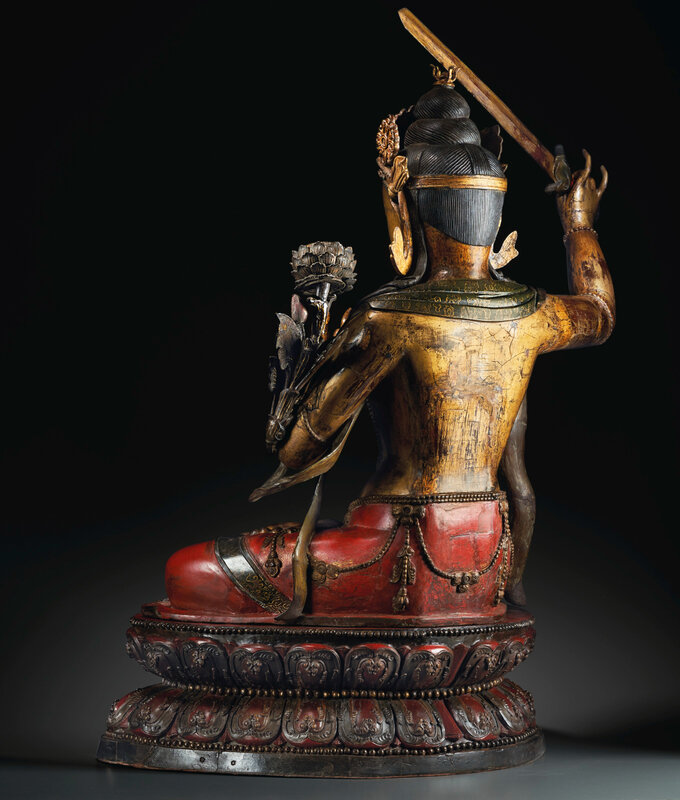
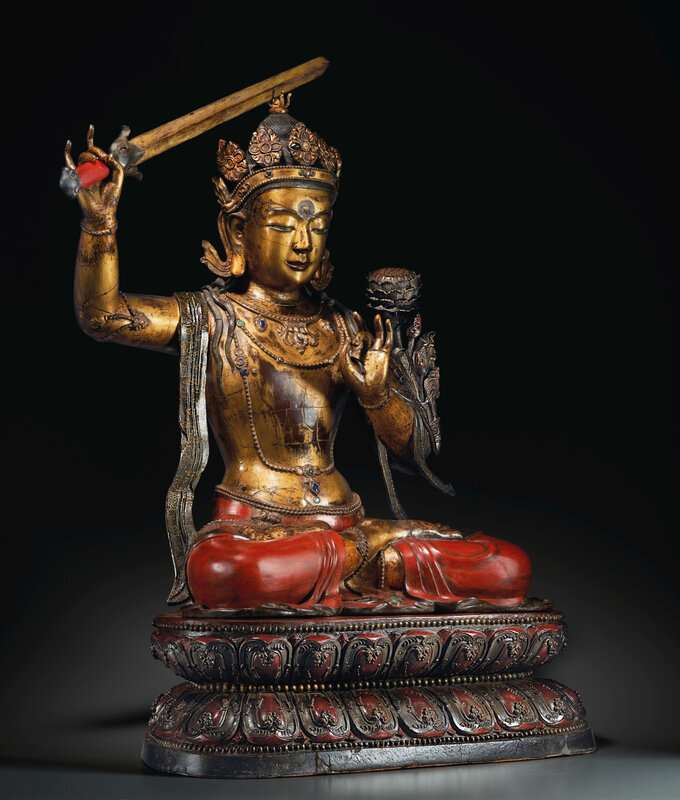
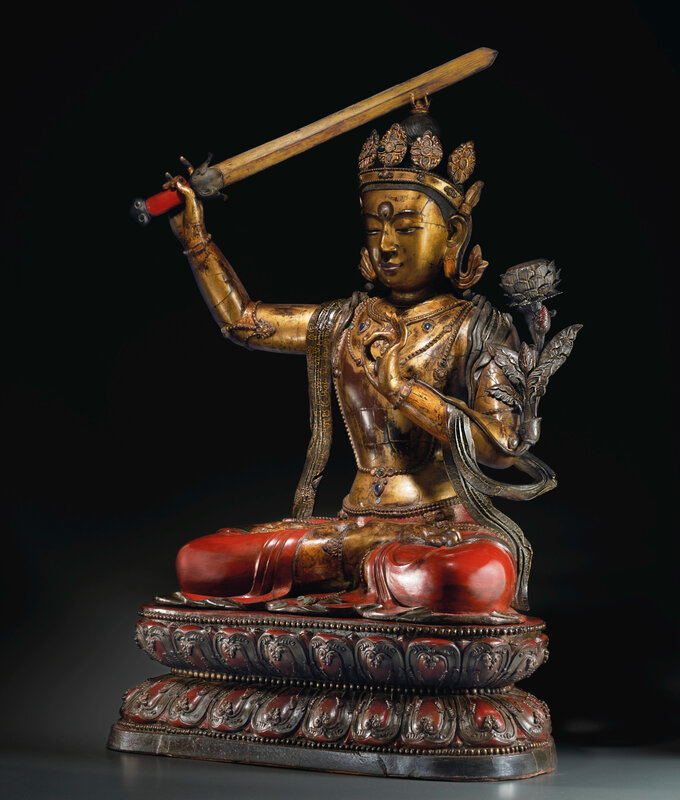

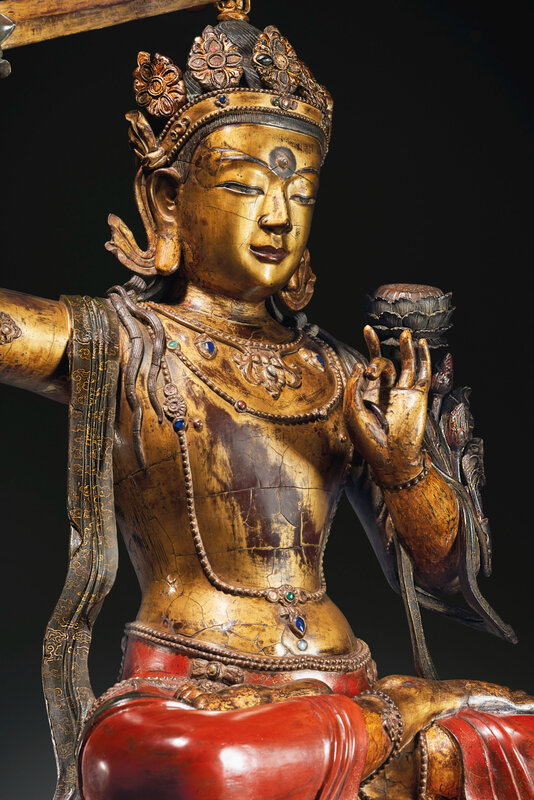

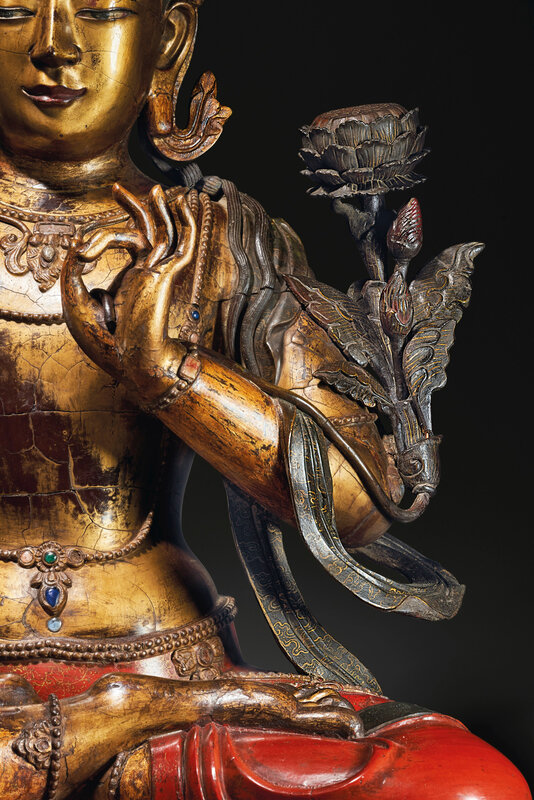


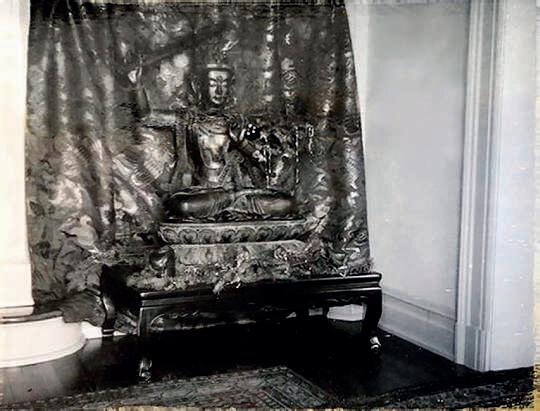




/http%3A%2F%2Fstorage.canalblog.com%2F39%2F51%2F119589%2F129772183_o.jpg)
/http%3A%2F%2Fstorage.canalblog.com%2F61%2F37%2F119589%2F128014207_o.jpg)
/http%3A%2F%2Fstorage.canalblog.com%2F36%2F45%2F119589%2F121067125_o.jpg)
/http%3A%2F%2Fstorage.canalblog.com%2F48%2F01%2F119589%2F120369013_o.jpg)